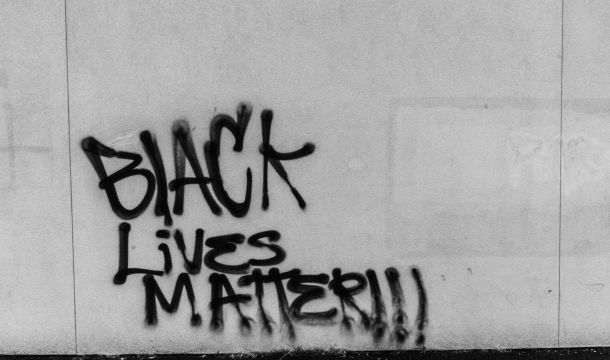Self-Preservation: The Importance of a Retention Policy for Company Documents and Electronically Stored Information
No company likes to receive an EEOC Charge. This EEOC charge contained detailed allegations of sexual harassment by a male supervisor toward a young female employee. Not only does the charge allege that the supervisor made inappropriate comments and unwanted advances, but the charge also alleges that he took advantage of the female financially; he “coerced” her into letting him move into an apartment with her and pay the rent and “coerced” the female employee to drive him to work in her car. The female former employee abruptly quit her job nearly six months ago. Although the Company has a well-publicized policy against harassment in the workplace and a harassment reporting procedure, the female former employee never reported any of these issues to anyone at the Company. The supervisor was discharged a month ago for poor performance. He claims that that he and the female employee had a consensual romantic relationship (in violation of Company policy; you make a note in his file that he is not eligible for rehire) but she broke it off because she felt like he was taking advantage of her. Your interviews of other employees reveals that the two of them did appear to be friendly and flirtatious at work. Then it occurs to you to ask your IT manager if she can access the female employee’s company computer. “Sure,” says the IT manager; “let me see if we kept anything on that computer.” And lucky for you and the Company, the computer had not been wiped clean. On the female former employee’s computer are several photographs. In some of those photographs, the female former employee and former supervisor look like they are at parties surrounded by many festive looking people with cocktails in hand. Moreover, in some of those photos, the two of them are kissing and touching each other. The female former employee looks like she is thoroughly enjoying herself. You make copies of these photos and attach them to your EEOC position statement. You also ask the IT manager to make sure that all of the electronically stored information of the former female employee’s computer (and the former supervisor’s computer) are preserved until further notice. One year later, you receive a “no cause” determination from EEOC. A lawsuit is never filed. While a picture may be worth a thousand words, those pictures are worth thousands of dollars in savings of litigation expenses for your Company.
This is an example of a positive benefit of electronically stored information (ESI) that has been retained by a company. However, rather than rely on the lucky happenstance that important ESI has been retained, a company should instead consider implementing a formal ESI retention policy and procedure. In addition, recent changes to the Federal Rules of Civil Procedure underscore the importance of a strong written policy to retain ESI as well as documents. Normally, amendments to the Federal Rules of Civil Procedure, the rules that govern civil lawsuits in federal courts, would be of little interest to people other than attorneys who engage in federal court litigation. However, the recent amendments, effective December 1, 2015, have such profound impact on the way that discovery is handled in federal court litigation that it is important for companies that may be involved in federal court litigation to be aware of the substance of those changes—before they become defendants.
One of the areas that should be of particular importance to companies is the revision to Rule 37, addressing the failure to preserve ESI. Rule 37 now provides that if ESI that should have been preserved in the anticipation or conduct of litigation is lost because a party failed to take reasonable steps to preserve it, and it cannot be restored or replaced through additional discovery, the court has two options, depending upon the court’s finding of the intent of the party that lost the information: (1) if the court finds prejudice to another party from loss of the information, it may order measures no greater than necessary to cure the prejudice; or (2) only upon finding that the party acted with the intent to deprive another party of the information’s use in the litigation, the court may issue much more severe sanctions:
- (A) presume that the lost information was unfavorable to the party;
- (B) instruct the jury that it may or must presume the information was unfavorable to the party; or
- (C) dismiss the action or enter a default judgment.
If discoverable documents or ESI go missing, chances are that the opposing party is going to claim that this was some sort of “smoking gun” that was destroyed or lost by the party it would adversely affect. To counter this argument, a company needs to have a reasonable preservation plan in place before it becomes involved in any litigation. In developing the policy and its associated procedures, the first step is to ascertain what types of ESI and data sources the company possesses. After the company determines what ESI actually exists, it can develop a plan for preservation of all ESI. Each step in the process should be documented and reviewed at regular intervals by responsible people. In effect, the company is creating a “chain of custody” for its documents and ESI. For example, when an employee leaves the company, what happens to her company email account and its contents? Or what does the company do with the data on a work-issued laptop or tablet used by a departing employee? These are questions that should be generally addressed in a preservation plan.
It recommended that the company seek the input of counsel when making these preservation decisions, especially when it comes to length of time that documents and ESI can be preserved. In employment litigation, for example, several years can elapse between the termination of an employee and the filing of the lawsuit in federal court, especially in those cases where an employee must exhaust administrative remedies. In recent years, we have seen charges languish at EEOC for several years. In the meantime, any documents or ESI relating to that former employee need to be preserved.

Kathleen J. Jennings is a former principal in the Atlanta office of Wimberly, Lawson, Steckel, Schneider, & Stine, P.C. She defends employers in employment matters, such as sexual harassment, discrimination, Wage and Hour, OSHA, restrictive covenants, and other employment litigation and provides training and counseling to employers in employment matters.
Related Content
Get Email Updates
Recent Content

NLRB to Seek Rescission of past Discipline Imposed under Overbroad Employer Work Rules

Do Drive Cam Cameras inside Trucks Violate Employee Rights?

Amazon Considers Risk When Investigating Employee Misconduct

Latest NLRB Attack Goes beyond Non-Compete Agreements to Reach Outside Employment

NLRB Board Addresses BLM Insignia at Work

